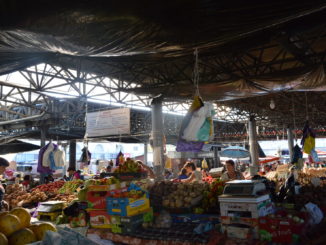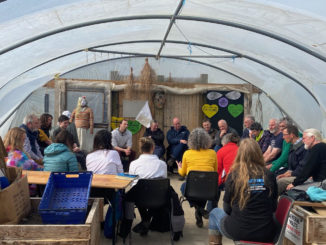“Food from Somewhere” is a recent report from IPES-Food on territorial markets – localised food systems and chains. So what’s in it? This report finds a disaster prone, not fit-for-purpose food system being propped up by government policies and other supports. Meanwhile, localised food systems do the work of feeding people day in day out without anything like as much support. But there are options for better supporting food on the ground. ARC dives in.
Its a familiar refrain to say that the food system is broken. But how so? “Food from Somewhere” a recent report from IPES-Food, really hones in on both the problem and solution to food system functionality.
What’s Not Working?
Hunger is persisting while the ‘zero hunger’ goal for 2030 is increasingly unattainable. Nearly 30% of the world food insecure and 42% unable to afford a healthy diet.
There is a growing need for resilience in an increasingly crises prone and multipolar world. The pandemic, the invasion of Ukraine, and recent climate shocks have led to supply chain chaos, volatile food prices, empty shelves, and a surge in hunger levels. Feeding a hungry world requires resilient food systems – particularly adaptability and robustness in the face of shocks.
Fragility of global industrial food chains. Corporate-controlled global food chains [ aka BigAg supply chains / industrial food chains] are catastrophically vulnerable to disruptions, climate change, and market volatility. This comes in part through concentration, standardisation, reliance on agri-industrial inputs and the use of vast amounts of energy – in short, they are not resilient. We cannot eradicate hunger while relying on just-in-time global supply chains that do not work all the time.
“New approaches are clearly needed to strengthen food self-sufficiency, enhance resilience to shocks, and rebuild food security on a new basis – as emphasized in growing calls for food sovereignty. Interest is now growing in the variety of vibrant food provisioning systems that exist beyond global food chains and corporate control.” (pg 4)
What does Food from Somewhere Offer?
As the report points out: “Vast populations are being fed daily by close-to-home food webs, supply chains and markets across the world, from public markets and street vendors to cooperatives, from urban agriculture to online direct sales, from food hubs to community kitchens. These diverse webs of ‘territorial markets’ are based around small-scale producers, processors, and vendors, rooted in territories and communities, and play multiple roles within them. (pg 5)
These territorial food systems are the “backbone” of food provisioning in many places benefit society in numerous ways – “On average, globally, 80% of cities’ food needs are supplied within a 500 km radius” as the report states.
Territorial markets play a crucial role in making food accessible and affordable to low-income populations. By providing access to a range of fresh healthy foods, territorial markets also play a key role in supporting dietary diversity and healthy diets – all while being robust and adaptable to shocks. Local food provisioning systems came to the fore in Lockdown ,as the report shows, in examples from Brazil, India and elsewhere.
Not only are these local markets vital for stable and diverse livelihood generation, they lend themselves well to the formation of co-ops, integration of women into revenue streams and help with preserving cultures, indigenous knowledge and biodiversity. All of this action builds social capital in various ways too.
How can Food from Somewhere be better supported?
The report suggests we must make ‘territorial markets’ into a centrepiece of non-corporate food system advocacy and action. Some of the methods to do this include
- Procurement – State and other similar public procurement purchasing schemes to can support (prioritise, ring fence) small-scale producers
- Pay – from microcredit to shifting subsidies to invest in infrastructure including public marketplaces, collectives and cooperatives, rural development, and city-rural transit links,
- Push back – local markets need to be protected from corporate co-optation, including breaking up supply chain monopolies,
- Promotion – Sustainable, biodiverse farming practices, and diverse healthy diets needs priority promotion.
| What are ‘territorial markets’?
‘Territorial markets’ are close-to-home food supply chains that feed billions of people every day, based on diverse distribution channels and markets, smaller-scale food producers and vendors, and serving communities.
|
Read/Download FoodFromSomewhere (full report)
More
CAP Strategic Plans: A European Food and Agricultural Policy for Times of War
Strategic Dialogue on Agriculture – what’s in it, what’s next?
Brussels News Roundup – Ombudsman Launches Inquiry into CAP Fast-Track







